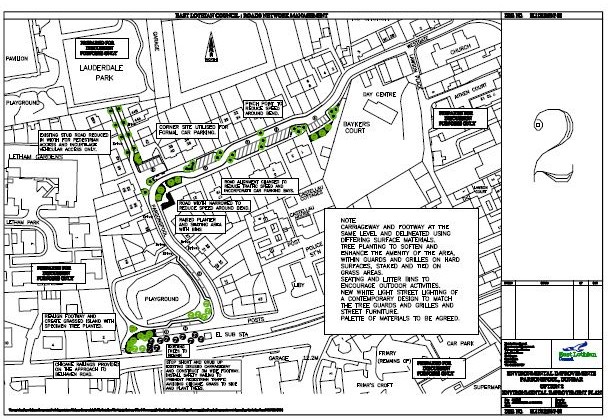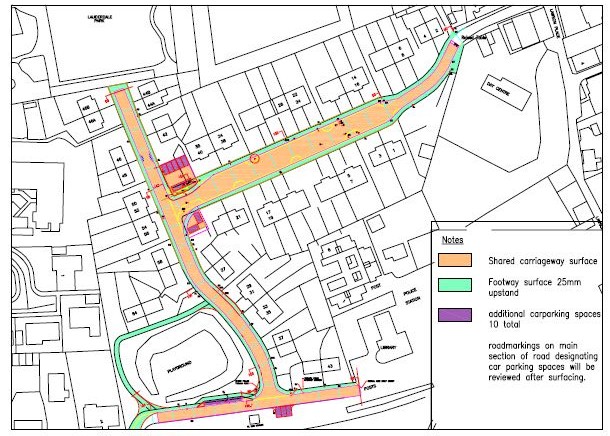
Thank you to everyone who came along to the Parsonspool Street Design Workshop on 11th February; and thanks also to those who couldn’t attend but sent in their comments. Sustaining Dunbar wants local people to be involved in any decisions relating to the street in which they live and would welcome your feedback on whether the Street Design Workshop was an effective way to go about this, or if you can suggest alternative methods of consultation.
We passed all the information gathered from both the workshop and letters to Peter and George at East Lothian Council, and they have revised the street plan in light of your views. We enclose copies of the both original proposals and the revised plan. As you can imagine, it is impossible to accommodate everyone’s suggestions but you will notice that the revised design maximises the available road space to accommodate either echelon or parallel parking, and 10 additional spaces are hoped to be provided (coloured Purple).
You will notice that the existing planting areas have been removed as no-one expressed an interest in maintaining any planting and the council does not have the resources to take this on. It will be possible to install raised beds at a later point should anyone wish to green up the street. Similarly, Sustaining Dunbar or East Lothian Council may be able to identify additional funding for seating or art features, should you wish to install these.
As you know, East Lothian Council have been out and about surveying the roads and pavements and hope to begin work in the middle of March. The work should take around 16 weeks. But it is still not too late to comment on the design. To make further comments about the scheme, please contact Peter Forsyth at East Lothian Council on 01620 827827 or pforsyth@eastlothian.gov.uk.
Additional copies of the plans are available at the BeGreen Shop, 16 West Port, Dunbar.


The initially proposed scheme didn’t look too bad. Wouldn’t it be nice if the Council could come up with a design-led scheme for the High Street with a bit more space for people and for trees, and perhaps a little less space for cars?
The original Dunbar High Street would have been a wide and open shared space and cobbled, which had they been fully restored today would help slow down traffic. (Such a pity the council has failed comprehensively to manage the contracts for initially renewing the road surface and then abdicating responsibility / giving up on the ongoing maintenance of the cobbled sets/crossings to the extent that most people now see them as a problem – how utterly incompetent, short sighted and such a waste of public money.)
Now, many East Lothian towns and villages have significant tree specimens in and along their High Streets. Trees even at low densities or individual specimen trees can have a very positive impact. This can be especially important where garden trees have been removed or gardens or urban greenspace is missing.
Aesthetically the permanent presence of cars on the High Street detracts from the architectural qualities of an important historic High Street, but cars are here to stay, at least for the immediate future. Trees at intervals would help to moderate the visual intrusion of modern features, such as cars. Other ugly recent additions to the streetscape could also be lost/hidden, and if planted in slightly greater densities trees could even moderate the microclimate (e.g. attenuate the extremes of afternoon sun, provide shade and shelter from those westerlies), reduce traffic noise and much more.
I am not talking about establishing weedy specimens that will not grow to any height or remain stunted through lack of care, nor native trees that would be out of place, nor diminutive garden trees and definitely not short-lived experiments (Norway Maple) in ugly planters (they will die and attract vandalism). I am talking about carefully selected and cultivated architectural specimens that would complement and enhance an important Scottish townscape and survive the rigours. They would be slow growing and take time to establish, but in time would grow be a long lasting and positive addition. There is a long tradition of tree planting to draw on, so we wouldn’t have to revert to a cheap and nasty scheme.
We have accepted and accommodated many many changes in the recent past (and frankly they have mostly detracted from the High Street) so why can’t we accommodate changes for the better?